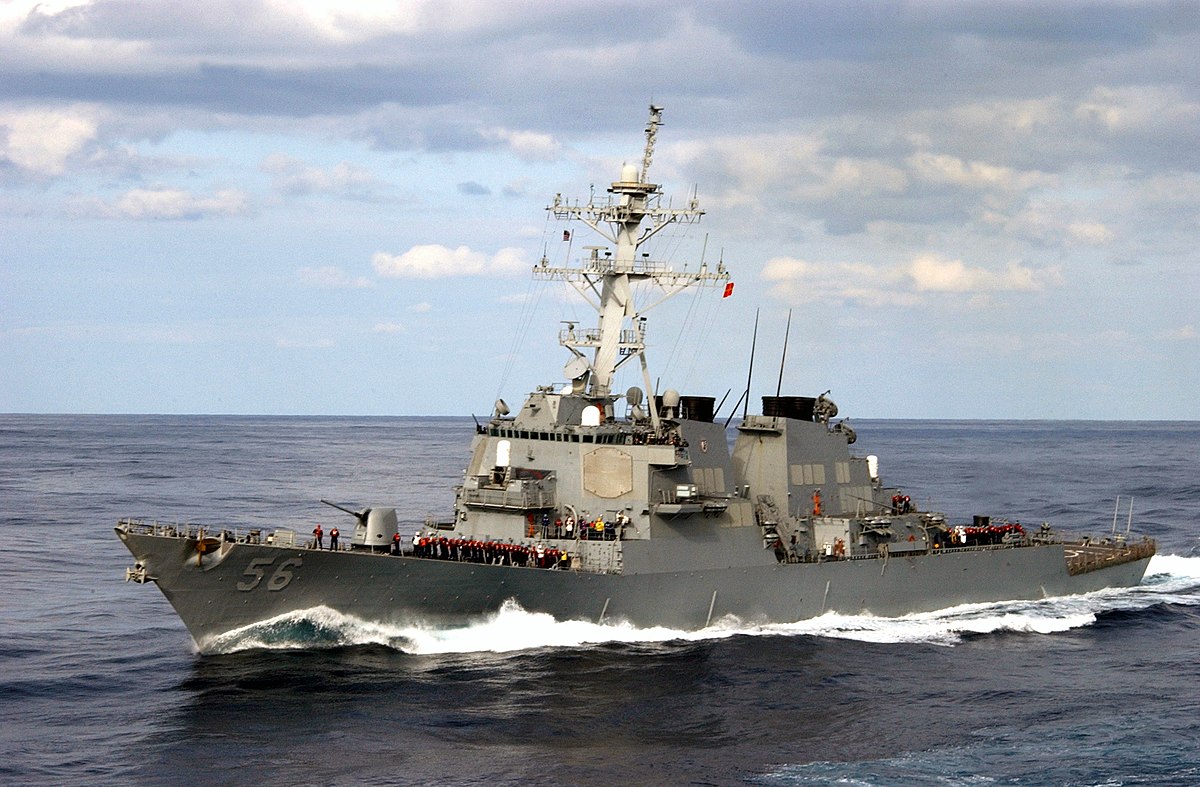 |
| USS John S. McCain (Image: Wiki Commons) |
The US Navy may be causing more harm than good in the Indo-Asian-Pacific theater.
The US military’s maritime presence near Asian shipping routes adds risk rather than helps uphold international freedom of navigation rights, Chinese news agencies said Tuesday.
This summer has already seen two crashes involving US Navy guided-missile destroyers and merchant vessels. In June, the USS Fitzgerald collided with the ACX Crystal container ship in an incident that killed seven sleeping US sailors when the bow of the transport ship struck the ship’s starboard side. On August 21, the USS John S. McCain was damaged on its port side following contact with the Alnic MC tanker east of Singapore near the Strait of Malacca.
The Malaccan straits are the highest-trafficked trading lanes in the world and hit a new record last year with 83,740 transits occurring, according to Seatrade Maritime News.
The US has conducted three freedom of navigation operations (FONOPs) since US President Donald Trump took office on January 20. During the operations, US Navy vessels traverse the contested territorial waters surrounding several islands in the South China Sea, much to Beijing’s chagrin. Just 11 days before the McCain and the Alnic MC crashed on August 10, the Arleigh Burke-class destroyer sailed within 6 miles of the man-made Mischief Reef in the South China Sea’s Spratly archipelago. The two previous FONOPs occurred in July and May.
Beijing has responded to the most recent “disruption” of its sovereignty in (contested) territorial waters. “The provocation by the US side has compelled the Chinese side to take measures to further enhance its capability and defend its territory,” a Chinese Foreign Ministry statement reads. US provocations are in fact “the biggest factor in the ‘militarization’ of the South China Sea,” the ministry said.
“The investigations into the latest collision will take time to reach their conclusions,” an editorial published Tuesday in the state-operated China Daily noted, “but there is no denying the fact that the increased activities by US warships in the Asia-Pacific since Washington initiated its rebalancing to the region are making them a growing risk to commercial shipping.”
The collisions serve as evidence that the US Navy “is becoming a dangerous obstacle” in the South China Sea, where ships carry an estimated $3 to $5 trillion worth of goods annually.
The cause of the sudden series of 7th Fleet ship accidents is as yet a mystery. The US Navy initiated an operational pause worldwide, as Chief of Naval Operations Adm. John Richardson ordered an investigation into what’s going on with the Pacific Fleet.
Real Clear Defense’s Omaid Faizyar wrote on Monday, “While accidents and mistakes do happen, the number of collisions in the past year is extremely rare, and it is now within the realm of possibility that these accidents were not accidents,” noting that Beijing has used cyberwarfare tools at sea in the past “with success.”
This story first appeared on Sputnik & is reposted here with permission.


